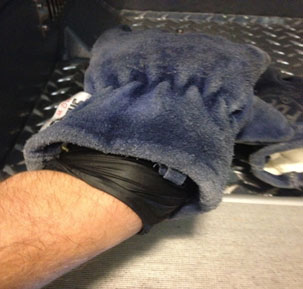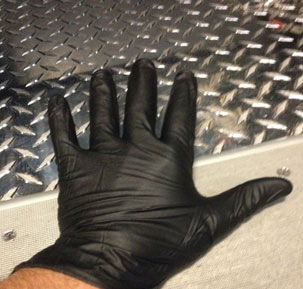
By Robert C. Owens, Sr.
The major challenge in managing cardiac arrest in a firefighter on the fireground is not only the environment but the mass of equipment—personal protective equipment (PPE) and self-contained breathing apparatus (SCBA)—that a firefighter wears. The first two links in the Chain of Survival are early access and early CPR. The fireground environment and firefighter equipment pose significant obstacles in removing or accessing firefighters rapidly and quickly removing PPE and SCBA that gets in the way of CPR.
RELATED: Firefighter Cardiac Arrest: Chain of Survival | Doffing Superheated Turnout Gear
The modern fire environment produces fires with higher heat release rates, resulting in higher interior temperatures. Firefighters exposed to these temperatures experience superheating of their PPE and SCBA. Think about the last time you participated in a live burn or went inside a flashover simulator. You were probably instructed to let your PPE off-gas prior to removing it in order to prevent burns. Typically, firefighters are instructed not to remove their firefighting gloves during this cooling period to prevent burns to their hands. Think about a firefighter inside an actively burning structure who collapses because of a cardiac event, illness, or injury. Imagine the amount of heat his PPE and SCBA are absorbing, especially the metal portions. If rapid intervention teams or EMS providers attempt to remove this PPE with bare hands or patient care gloves, they could quickly become burn patients themselves!
How do you provide rapid removal of super-heated PPE and SCBA, while still maintaining thermal protection and body substance isolation needed for patient care?
The Layering Technique
Note first and foremost hat this technique is NOT for interior operations. It is for exterior rescue team members who will take over patient care of a downed firefighter once he or she is removed from the fire occupancy.

Exterior EMS or dedicated firefighter patient care teams, once assigned will don their EMS patient care gloves.

Then over top of their patient care gloves they will don structural firefighting gloves.

If a rescue event occurs, this technique allows for the exterior rescuer to rapidly remove super-heated PPE and SCBA while maintaining their own thermal protection; it also provides for body substance isolation during patient care. Once the PPE is removed and the risk of burn injury is reduced, the structural firefighting gloves can be removed and normal EMS gloves remain in place to reduce transition time. While “layered up,” hands-only CPR and other patient care functions requiring limited dexterity can still be performed (CPR, bag valve mask, BLS airway, etc.)
Again, this is not for interior use, and I strongly discourage layering prior to entering a fire building. This is purely for exterior firefighter patient care, specifically the removal of superheated PPE and SCBA so that patient care can be started. Although we focus on the cardiac arrest in this article, this technique should be used for any downed firefighter treatment no matter the etiology, if the firefighter was removed from a fire building. This ensures that no rescuer will be burned.
If your fire department provides EMS response to your fires, then this is a simple solution. However, does your third-service EMS agency have access to structural firefighting gloves? Make sure whoever is treating your firefighters has the equipment to do it properly. Lives do, in fact, depend on it.
ROBERT C. OWENS SR. is an engine company lieutenant with the Henrico County (VA) Division of Fire. He began his fire service career with the Mechanicsville (VA) Volunteer Fire Department. He previously served as a career firefighter in Stafford County, Virginia. He is a Virginia Department of Fire Programs-certified instructor 2 and fire officer level 4 and a mass casualty incident management instructor for the Virginia Office of EMS. He has a BS degree in fire science from Columbia Southern University.

